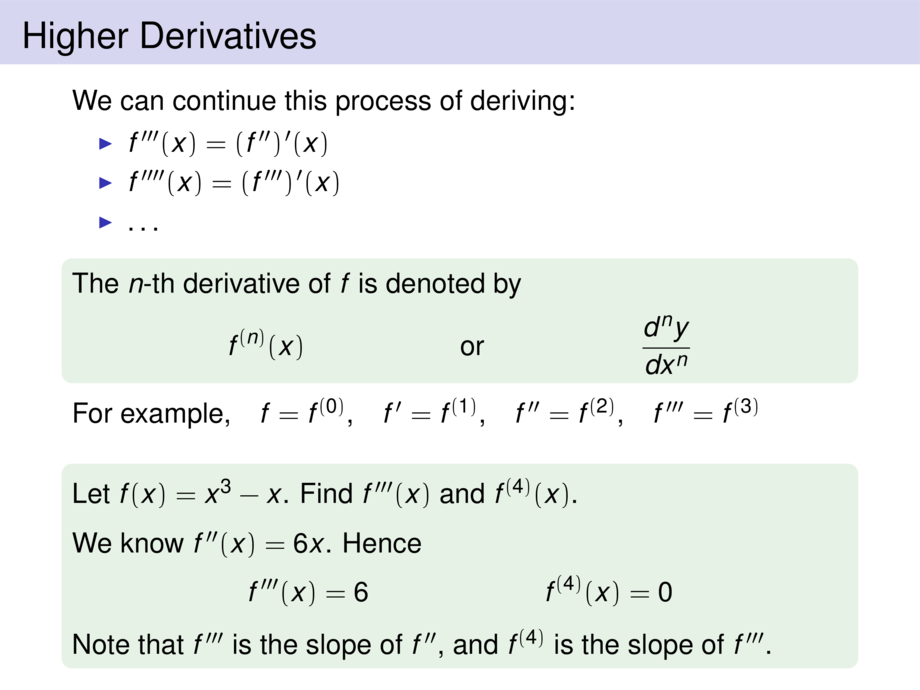



































































































116/116
\begin{frame}
\frametitle{Higher Derivatives}
We can continue this process of deriving:
\begin{itemize}
\pause
\item $f'''(x) = (f'')'(x)$
\pause
\item $f''''(x) = (f''')'(x)$
\pause
\item \ldots
\end{itemize}
\pause
\begin{exampleblock}{}
The $n$-th derivative of $f$ is denoted by
\begin{talign}
f^{(n)}(x) &&\text{or}&& \frac{d^ny}{dx^n}
\end{talign}
\end{exampleblock}
\pause
For example,\quad $f = f^{(0)}$,\quad $f' = f^{(1)}$,\quad $f'' = f^{(2)}$,\quad $f''' = f^{(3)}$
\pause\medskip
\begin{exampleblock}{}
Let $f(x) = x^3 - x$. Find $f'''(x)$ and $f^{(4)}(x)$.
\pause\medskip
We know $f''(x) = 6x$. \pause Hence
\begin{talign}
f'''(x) = \mpause[1]{6} && \mpause[2]{f^{(4)}(x) = \mpause[3]{0}}
\end{talign}
\pause\pause\pause\pause
Note that $f'''$ is the slope of $f''$, and $f^{(4)}$ is the slope of $f'''$.
\end{exampleblock}
\end{frame}

